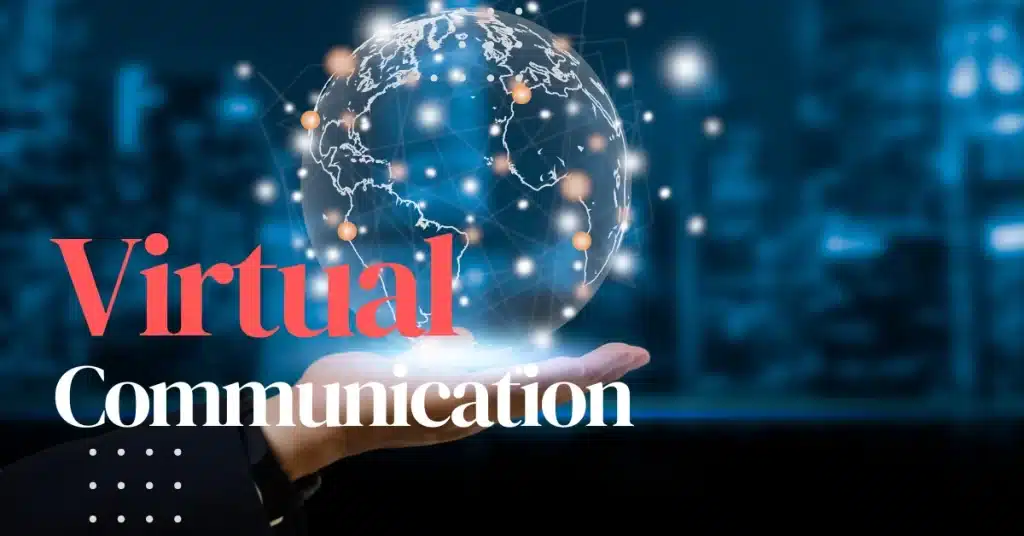Table of Contents
Introduction
Virtual communication is the cornerstone of modern communication, thanks to technological advancements in recent years. It has enabled people to connect with each other regardless of their physical locations. It has also provided various benefits such as flexibility, increased productivity, and efficiency. However, virtual communication presents a unique set of challenges that require a different approach compared to traditional communication. This article will provide tips and strategies to help you succeed in virtual communication.
What are Virtual Communication Skills?
Virtual communication skills are the abilities needed to effectively communicate with others through digital or electronic means, such as email, chat, video conferencing, and social media. These skills are essential in today’s digital age, where many people work remotely, attend online classes, and connect with others from around the world.
Examples of virtual communication include:
- Email: sending and receiving messages through email
- Video conferencing: conducting virtual meetings or presentations through platforms like Zoom or Microsoft Teams
- Chatting: instant messaging through platforms like Slack or WhatsApp
- Social media: engaging with others through platforms like Twitter, Facebook, or LinkedIn
- Virtual reality: using virtual reality technology to communicate in immersive digital environments
Benefits of Virtual Communication
Virtual communication offers several benefits, including:
- Increased accessibility: virtual communication allows people to connect and collaborate with others from anywhere in the world, regardless of geographical distance or time zone differences.
- Flexibility: virtual communication can be more flexible than in-person communication, allowing people to schedule meetings or communicate at times that are convenient for them.
- Cost savings: virtual communication can be more cost-effective than in-person communication, as it eliminates the need for travel and other expenses associated with face-to-face meetings.
- Increased productivity: virtual communication can increase productivity by allowing people to communicate and collaborate more efficiently, and by reducing the time and resources required for in-person meetings.
Types of Virtual Communication
There are several types of virtual communication, including:
- Synchronous communication: communication that occurs in real-time, such as video conferencing or instant messaging.
- Asynchronous communication: communication that occurs at different times, such as email or social media.
- One-to-one communication: communication between two people, such as a phone call or direct message.
- One-to-many communication: communication to a group of people, such as a virtual presentation or social media post.
- Many-to-many communication: communication between multiple people, such as a group chat or online forum.
Importance of Virtual Communication
Virtual communication is important for several reasons, including:
- Increased accessibility: virtual communication allows people to connect and collaborate with others from anywhere in the world, making it easier to work with people from diverse backgrounds and locations.
- Improved efficiency: virtual communication can be more efficient than in-person communication, allowing people to communicate and collaborate more quickly and easily.
- Greater flexibility: virtual communication can be more flexible than in-person communication, allowing people to schedule meetings or communicate at times that are convenient for them.
- Cost savings: virtual communication can be more cost-effective than in-person communication, as it eliminates the need for travel and other expenses associated with face-to-face meetings.
Understanding Virtual Communication
Before diving into the strategies for successful virtual communication, it’s essential to understand the concept of virtual communication. Virtual communication is any communication that takes place using electronic or digital means such as email, video conferencing, text messaging, and social media. It’s different from in-person communication as it lacks nonverbal cues, making it challenging to understand the tone and meaning of a message. It’s also different in that it requires a different set of skills and strategies to succeed.
Challenges of Virtual Communication
Virtual communication presents a unique set of challenges that can make it difficult to achieve success. The lack of nonverbal cues can cause misinterpretation of the tone and meaning of a message, leading to misunderstandings. Time zone differences and other logistical issues can also make it challenging to communicate effectively. Overcoming these challenges requires a deep understanding of the nuances of virtual communication.
Strategies for Successful Virtual Communication
To achieve success in virtual communication, it’s essential to have a set of strategies and techniques that work. Effective use of language and tone is critical in virtual communication as it provides context to your message. Active listening and asking clarifying questions can also help to reduce misunderstandings. Choosing the right communication tools and platforms, developing a clear communication plan, and setting expectations for response times are also essential for success in virtual communication.
Another critical strategy is to establish and maintain a professional demeanor in virtual communication. This includes being mindful of your written and verbal communication, dressing appropriately for video conferences, and avoiding distractions during virtual meetings.
Finally, it’s important to nurture relationships in virtual communication. Building rapport with colleagues, clients, and partners can help to establish trust and improve collaboration. Scheduling regular virtual meetings and finding opportunities for informal communication can help to strengthen relationships and promote a positive virtual work environment.
Conclusion
Virtual communication is an essential aspect of modern communication, and it’s here to stay. With the right strategies and techniques, anyone can succeed in virtual communication. Understanding the challenges and nuances of virtual communication, maintaining a professional demeanor, and nurturing relationships are all critical factors for success. By following these tips, you can overcome the challenges of virtual communication and reap the benefits of increased productivity, flexibility, and efficiency.

